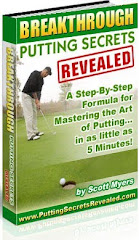The USGA's engineers take a fairly deliberate approach to determining golf-ball conformance (the Initial Velocity Test, the Overall Distance Standard and the Symmetry Test procedures require 22 pages of explanation). But our process does one thing the USGA's doesn't: We ask real golfers what works in a blind evaluation.
Our panel of players and editors met for four days at the Sandestin Golf and Beach Resort in Destin, Fla. The goal was to identify the most effective and intriguing golf balls in the game today.
We realize, however, that even a search of 30 balls can be difficult. One thing we've learned in the decades we've been analyzing golf balls is that choosing one ball over another involves some compromise. Whether it's greenside spin, feel off the putterface, carry distance, dispersion control or even the price, every ball requires you to give up something to gain something else.
Sometimes the differences aren't obvious. More than once during our tests with golf pros and low-handicap amateurs, we heard players extol a golf ball as good enough to use in their next tournament--only for them to learn later that the ball they coveted was a bargain two-piece model.
Before choosing a golf ball, ask yourself two questions: (1) How much spin around the green do I want? (2) How much do I want to spend? These answers and a review of the information on the following pages should give you a starting point for your search.
Of course, if the compromises don't make sense to you, or if you can't see the benefits on the golf course, then our advice is to play the least-expensive ball. Still, we believe there's more engineering per cubic centimeter in a golf ball than in any recreational product out there. That engineering can make you a better player. Try a few, and see how much better you might be.
Callaway Ball Warbird Plus Golf Balls $16.86

Over the next few posts we will present the finding of the Golf Digest study. For more information now visit
http://www.golfdigest.com/golf-equipment/hot-list/2010-06/hotlist2010-golfballs#ixzz0nkp3OK72












